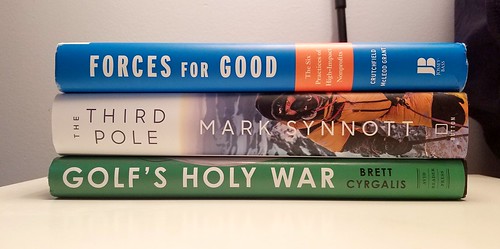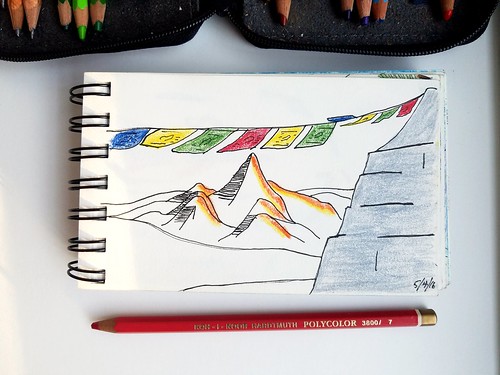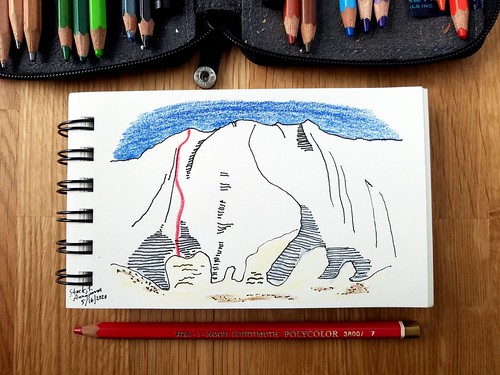
Note: Sometime after I learned David Roberts was diagnosed with cancer I wrote what major newspapers call a “preobituary” about him. These obituaries are prepared in advance and published immediately upon the individuals death to share the news and explain the person’s significance. These are written for exceptional celebrities, leaders, athletes, and writers. For me and my readers David Roberts qualfies and I hoped to celebrate his life respectfully this way. However, when Roberts died in August 2021 I went to hit publish on my formal piece but had serious misgivings about it and have ever since. The preobituary wasn’t good enough. After a lot of thought during this year of wearing black, as a tribute I decided to share with you the two things that I learned from David Roberts that deeply influenced my life.
When I read David Roberts words about Ed Bernd vanishing on Mount Huntington, it was still winter in 2000 and I was in my avoiding working on a mid-term college paper reading in the comfort of my bed. My world was dimly lit by an old hanging lamp, which cast my reading space with a plastic yellow-orange glow. I bought the book, Moments of Doubt, an anthology of Roberts short works because I had just finished The Lost Explorer, which he wrote with Conrad Anchor, and was my introduction to Everest climbing beyond the Imax movie.
Roberts and Bernd were descending as a two-man team of a four-expedition after their successful second ascent by a new route of the most beautiful peak in the Alaska Range. It was now dark and the two two-man teams were climbing to tents at different camps to rest before continuing the descent Roberts and Bernd would go lower and on the descent to camp, unroped, there was a spark, and without a sound or more explanation, Ed Bernd disappeared.
Roberts quieted my unstill mind at that moment and I was was wholly present on Mount Huntington in a dark world. It wasn’t war, it wasn’t politics, it wasn’t work or school, but the joy at the top and the specter of death was palpable. And this wasn’t fiction.
Alone, Roberts descended to the lower camp. Foul weather blew in and for five days, Roberts spent in the tent wondering about Bernd. Wondering whether Bernd could be walking out or what his resting place would be like. Wondering if his teammates were at the higher camp. When would they come? Would they come?
I sunk into a dreamlike-like state in the orange light. I was surprised he was alone, in the dark, high on a slope. Roberts’ partners may be a few hundred yards aways but this was a windy night, without a radio, and in 1965 when shouting and visits were the most effective communication.
LONGEURS
The essay in Moments of Doubt is largely a introspective piece composed of a longeur during his tent stay. I read with interest, and even now, 22 years later, I saw the bright spark opening to a void with an orange glow.
This story in the essay, originally a magazine article, “Five Days on Mount Huntington,” introduced me to a wholly separate and valid view of the world I didn’t fully know. I had read the Bible with intense interest to find my who I was and set my purpose. I was also increasingly drawn to political leaders and war heroes, like George Washington, John McCain, John F. Kennedy, and Henry Kissinger since I was in middle school. These stories showed me paths, but none of them taught me about myself, and the toll of courage, endurance, and honorable character, in the classic old-fashioned sense. No one wrote so honestly as Roberts about self-doubt, second guessing, pity, and a selfish soul trying to rise above itself that I have ever found.
Which brings me to the first thing Roberts taught me, through his works: Seriously considering a wave of doubt about anything important was not itself a sin, and death was an end of living, at least on earth where I wanted to be, no matter what my pastor said or history books said about immortals. “Five Days on Mount Huntington” was just the start of seeking stories where people pursuing great challenges opened up. I looked for more in biographies of world leaders and business executives, in baseball memoirs, golf autobiographies, and found some during the longeurs but not one compared to those written by Roberts or by a climber generally. They became proverbs and scripture of an un-sacred un-codified book.
THE COST OF TRANSCENDENCE
Roberts story of Ed Bernd continued in his autobiography On the Ridge Between Life and Death. Roberts was coming home from from Mount Huntington and he volunteered to pay his respects to Ed Bernds parents. Roberts hoped to comfort them, and perhaps make them more proud of their son.
In an interview on the Apinist Podcast he confesses to interviewer Paula Wright that he was woefully unprepared for the mourning of parents. In Outside Magazine in 1980, Roberts published the essay “Moments of Doubt,” which became the title of the anthology of articles where I read “Five Days on Mount Huntington.” In that article he asks whether climbing is worth the risks and he boldly reasons, yes, absolutely: Despite the pain and sacrifice, the beauty found on an alpine summit or ridge was overwhelmingly euphoric and transcends many petty things of life. To experience that was worth the risk. The flaw, he confessed to Wright much, much later, was that he hadn’t considered the cost of the risk to others.
Ed’s parents were in despair and distraught that Ed’s body was unrecoverable. When Roberts comforted them that Ed’s resting place was a beautiful place on the glacier of the Alaska Range, he was met with a reply from a different set of values: Ed’s mother replied (and I imagine sorrowfully,) “My son, he must be so cold.”
This raises the second lesson Roberts taught me: You may hold the token for transcendence’s slot machine, but someone you care for may be the cosigner left with an enormous price to pay. Jennifer Lowe Anker and Brett Harrington have both lost significant others in climbing and their grief has been documented through film, a book, and articles by them and others. And at least they embraced climbing. Ed’s parents didn’t.
I am in awe of achievement in the mountains from Roberts and his fellow Harvard Mountaineering Club members climbing Denali’s north face, the dangerous Wickersham Wall, to Alex Honnold’s historic free solo of Free Rider on El Capitan in Yosemite. The consequences, I believe, they accepted, though everyone on the Wickersham Wall were a little naive about that climb (they thought all the rocks falling were normal risks that had to be overcome by shear grit.) The possibility of death was at least disclosed. Within the circle of climbers, we all understand that we are seeking something, or even pursuing some transcendence with nature or within ourselves. The explanations for death in pursuit of that failure are a different equation.
Climbing is an amazing pursuit with the ability to hurt the ones we love. I don’t know how to balance that. Roberts didn’t have an answer or a lesson for that, unfortunately. Maybe that question is part of an unfinished third lesson from David Roberts.
Lastly, to Mr. Roberts, thank you for writing and sharing your stories and your insightful thoughts with me throughout your life. And thank you for introducing me to so many interesting and important historical climbers, including Bradford Washburn. My life has been better with all of it.
If you enjoyed this post, please consider following me on Facebook, or Twitter. If you want periodic email updates on my posts, shoot me a kind email and let me know you do. And if you value this blog, please consider giving me a tip by buying me a cup of coffee. Thanks again for stopping by and be well!




